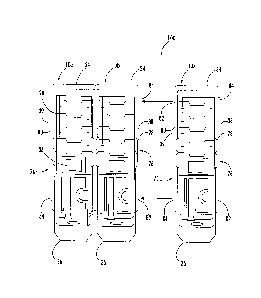Some of the information on this Web page has been provided by external sources. The Government of Canada is not responsible for the accuracy, reliability or currency of the information supplied by external sources. Users wishing to rely upon this information should consult directly with the source of the information. Content provided by external sources is not subject to official languages, privacy and accessibility requirements.
Any discrepancies in the text and image of the Claims and Abstract are due to differing posting times. Text of the Claims and Abstract are posted:
| (12) Patent Application: | (11) CA 2993734 |
|---|---|
| (54) English Title: | POCKET HOLE JIG |
| (54) French Title: | GABARIT DE PERCAGE A ANGLE |
| Status: | Allowed |
| (51) International Patent Classification (IPC): |
|
|---|---|
| (72) Inventors : |
|
| (73) Owners : |
|
| (71) Applicants : |
|
| (74) Agent: | MARKS & CLERK |
| (74) Associate agent: | |
| (45) Issued: | |
| (22) Filed Date: | 2018-02-01 |
| (41) Open to Public Inspection: | 2018-08-01 |
| Examination requested: | 2023-01-31 |
| Availability of licence: | N/A |
| Dedicated to the Public: | N/A |
| (25) Language of filing: | English |
| Patent Cooperation Treaty (PCT): | No |
|---|
| (30) Application Priority Data: | ||||||
|---|---|---|---|---|---|---|
|
A pocket hole jig for locating pocket holes in a workpiece includes a base
with a base
plate and first and second side walls extending along the base plate, and a
body disposed
between the first and second side walls and slidable along the base in a
forward direction and a
rearward direction. The body includes a drill bit aperture angled downward
toward the base
plate. The pocket hole jig also includes a fastener configured to releasably
couple the pocket
hole jig to an adjacent second pocket hole jig.
Note: Claims are shown in the official language in which they were submitted.
Note: Descriptions are shown in the official language in which they were submitted.

2024-08-01:As part of the Next Generation Patents (NGP) transition, the Canadian Patents Database (CPD) now contains a more detailed Event History, which replicates the Event Log of our new back-office solution.
Please note that "Inactive:" events refers to events no longer in use in our new back-office solution.
For a clearer understanding of the status of the application/patent presented on this page, the site Disclaimer , as well as the definitions for Patent , Event History , Maintenance Fee and Payment History should be consulted.
| Description | Date |
|---|---|
| Letter Sent | 2024-06-03 |
| Notice of Allowance is Issued | 2024-06-03 |
| Inactive: Approved for allowance (AFA) | 2024-05-28 |
| Inactive: Q2 passed | 2024-05-28 |
| Letter Sent | 2023-02-22 |
| Request for Examination Received | 2023-01-31 |
| Request for Examination Requirements Determined Compliant | 2023-01-31 |
| Amendment Received - Voluntary Amendment | 2023-01-31 |
| All Requirements for Examination Determined Compliant | 2023-01-31 |
| Amendment Received - Voluntary Amendment | 2023-01-31 |
| Common Representative Appointed | 2020-11-07 |
| Common Representative Appointed | 2019-10-30 |
| Common Representative Appointed | 2019-10-30 |
| Change of Address or Method of Correspondence Request Received | 2019-07-24 |
| Inactive: Office letter | 2019-07-11 |
| Letter Sent | 2019-04-30 |
| Inactive: Correspondence - Formalities | 2019-04-11 |
| Correct Applicant Request Received | 2019-04-11 |
| Inactive: Single transfer | 2019-04-11 |
| Inactive: Reply to s.37 Rules - Non-PCT | 2019-04-11 |
| Letter Sent | 2018-09-21 |
| Inactive: Single transfer | 2018-09-18 |
| Application Published (Open to Public Inspection) | 2018-08-01 |
| Inactive: Cover page published | 2018-07-31 |
| Inactive: IPC assigned | 2018-02-21 |
| Inactive: First IPC assigned | 2018-02-21 |
| Inactive: IPC assigned | 2018-02-21 |
| Inactive: Filing certificate - No RFE (bilingual) | 2018-02-15 |
| Application Received - Regular National | 2018-02-08 |
There is no abandonment history.
The last payment was received on 2024-01-26
Note : If the full payment has not been received on or before the date indicated, a further fee may be required which may be one of the following
Patent fees are adjusted on the 1st of January every year. The amounts above are the current amounts if received by December 31 of the current year.
Please refer to the CIPO
Patent Fees
web page to see all current fee amounts.
| Fee Type | Anniversary Year | Due Date | Paid Date |
|---|---|---|---|
| Application fee - standard | 2018-02-01 | ||
| Registration of a document | 2018-09-18 | ||
| Registration of a document | 2019-04-11 | ||
| MF (application, 2nd anniv.) - standard | 02 | 2020-02-03 | 2020-01-24 |
| MF (application, 3rd anniv.) - standard | 03 | 2021-02-01 | 2021-01-22 |
| MF (application, 4th anniv.) - standard | 04 | 2022-02-01 | 2022-01-28 |
| MF (application, 5th anniv.) - standard | 05 | 2023-02-01 | 2023-01-27 |
| Request for examination - standard | 2023-02-01 | 2023-01-31 | |
| MF (application, 6th anniv.) - standard | 06 | 2024-02-01 | 2024-01-26 |
Note: Records showing the ownership history in alphabetical order.
| Current Owners on Record |
|---|
| TTI (MACAO COMMERCIAL OFFSHORE) LIMITED |
| Past Owners on Record |
|---|
| CLINTON C. THACKERY |
| DREW A. DAHILL |
| HARRISON S. MCSPADDEN |
| JACOB F. CREASMAN |
| RICHARD M. DAVIDIAN |
| THOMAS EVATT |